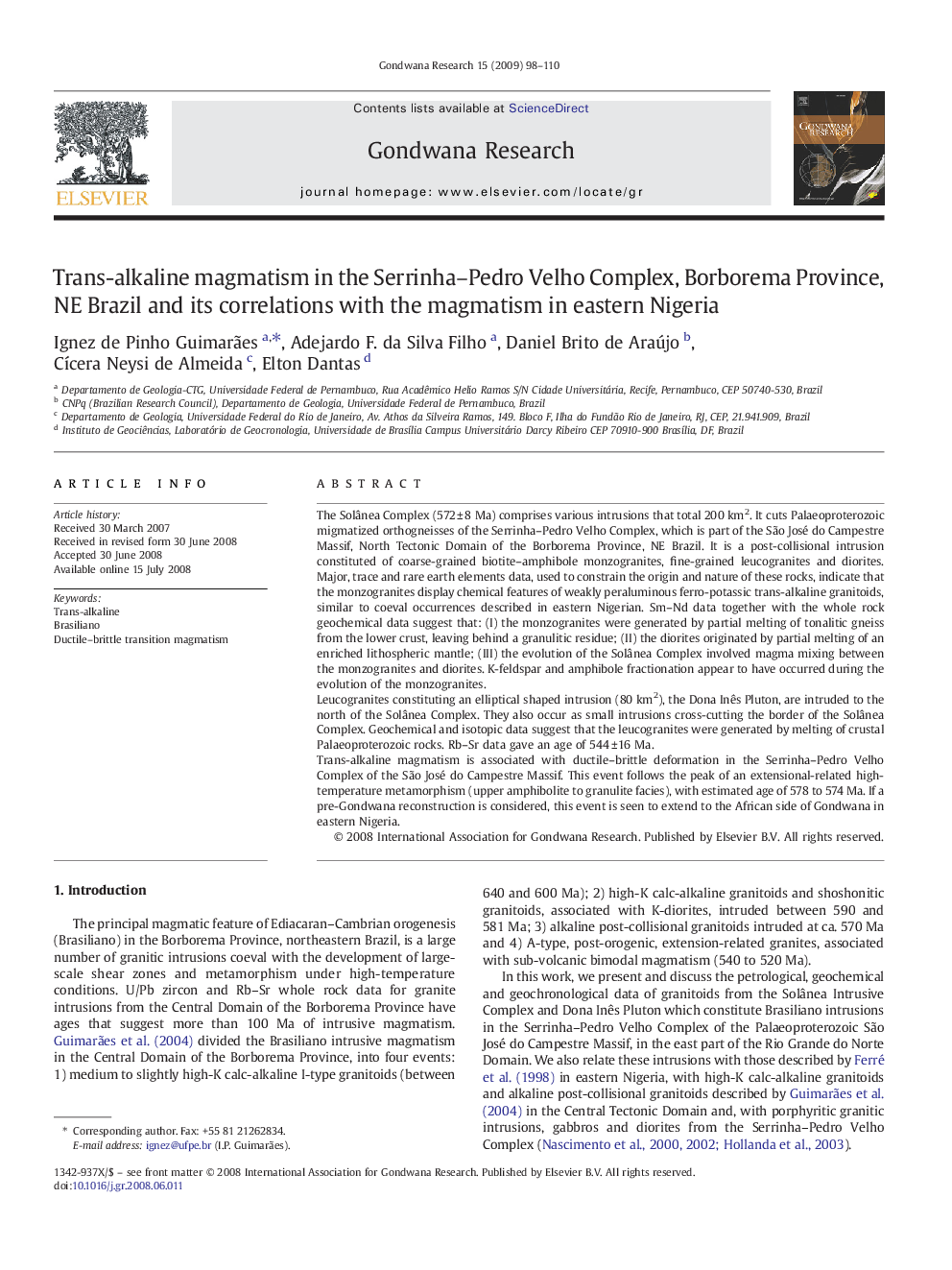| کد مقاله | کد نشریه | سال انتشار | مقاله انگلیسی | نسخه تمام متن |
|---|---|---|---|---|
| 4727932 | 1356405 | 2009 | 13 صفحه PDF | دانلود رایگان |

The Solânea Complex (572 ± 8 Ma) comprises various intrusions that total 200 km2. It cuts Palaeoproterozoic migmatized orthogneisses of the Serrinha–Pedro Velho Complex, which is part of the São José do Campestre Massif, North Tectonic Domain of the Borborema Province, NE Brazil. It is a post-collisional intrusion constituted of coarse-grained biotite–amphibole monzogranites, fine-grained leucogranites and diorites. Major, trace and rare earth elements data, used to constrain the origin and nature of these rocks, indicate that the monzogranites display chemical features of weakly peraluminous ferro-potassic trans-alkaline granitoids, similar to coeval occurrences described in eastern Nigerian. Sm–Nd data together with the whole rock geochemical data suggest that: (I) the monzogranites were generated by partial melting of tonalitic gneiss from the lower crust, leaving behind a granulitic residue; (II) the diorites originated by partial melting of an enriched lithospheric mantle; (III) the evolution of the Solânea Complex involved magma mixing between the monzogranites and diorites. K-feldspar and amphibole fractionation appear to have occurred during the evolution of the monzogranites.Leucogranites constituting an elliptical shaped intrusion (80 km2), the Dona Inês Pluton, are intruded to the north of the Solânea Complex. They also occur as small intrusions cross-cutting the border of the Solânea Complex. Geochemical and isotopic data suggest that the leucogranites were generated by melting of crustal Palaeoproterozoic rocks. Rb–Sr data gave an age of 544 ± 16 Ma.Trans-alkaline magmatism is associated with ductile–brittle deformation in the Serrinha–Pedro Velho Complex of the São José do Campestre Massif. This event follows the peak of an extensional-related high-temperature metamorphism (upper amphibolite to granulite facies), with estimated age of 578 to 574 Ma. If a pre-Gondwana reconstruction is considered, this event is seen to extend to the African side of Gondwana in eastern Nigeria.
Journal: Gondwana Research - Volume 15, Issue 1, February 2009, Pages 98–110